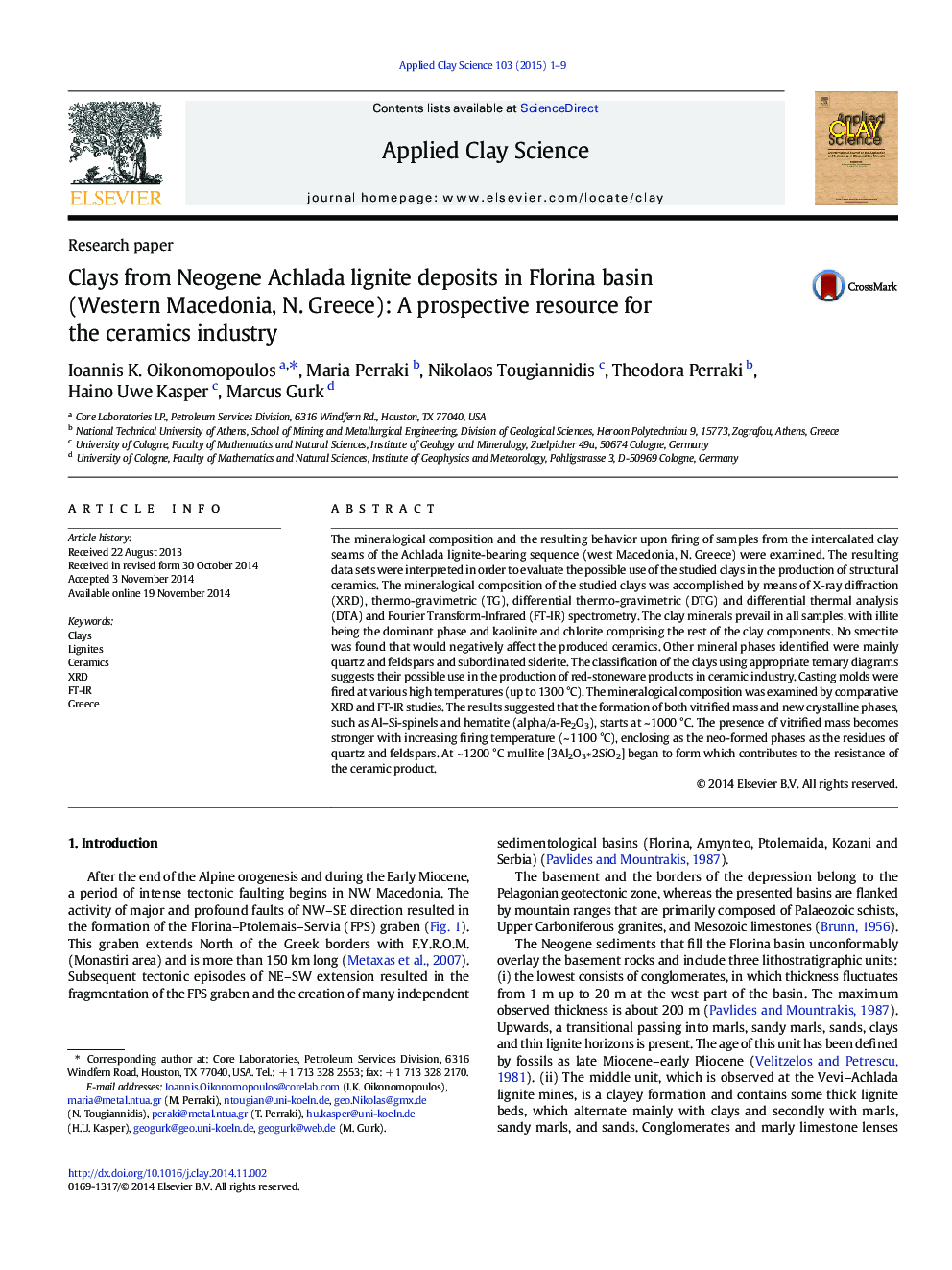| کد مقاله | کد نشریه | سال انتشار | مقاله انگلیسی | نسخه تمام متن |
|---|---|---|---|---|
| 1694507 | 1519075 | 2015 | 9 صفحه PDF | دانلود رایگان |
عنوان انگلیسی مقاله ISI
Clays from Neogene Achlada lignite deposits in Florina basin (Western Macedonia, N. Greece): A prospective resource for the ceramics industry
ترجمه فارسی عنوان
رس ها از رسوب های نئوژن آگلهادا در حوضه فلورینا (مقدونیه غربی، یونان): یک منبع آینده نگر برای صنعت سرامیک
دانلود مقاله + سفارش ترجمه
دانلود مقاله ISI انگلیسی
رایگان برای ایرانیان
کلمات کلیدی
موضوعات مرتبط
مهندسی و علوم پایه
علوم زمین و سیارات
ژئوشیمی و پترولوژی
چکیده انگلیسی
The mineralogical composition and the resulting behavior upon firing of samples from the intercalated clay seams of the Achlada lignite-bearing sequence (west Macedonia, N. Greece) were examined. The resulting data sets were interpreted in order to evaluate the possible use of the studied clays in the production of structural ceramics. The mineralogical composition of the studied clays was accomplished by means of X-ray diffraction (XRD), thermo-gravimetric (TG), differential thermo-gravimetric (DTG) and differential thermal analysis (DTA) and Fourier Transform-Infrared (FT-IR) spectrometry. The clay minerals prevail in all samples, with illite being the dominant phase and kaolinite and chlorite comprising the rest of the clay components. No smectite was found that would negatively affect the produced ceramics. Other mineral phases identified were mainly quartz and feldspars and subordinated siderite. The classification of the clays using appropriate ternary diagrams suggests their possible use in the production of red-stoneware products in ceramic industry. Casting molds were fired at various high temperatures (up to 1300 °C). The mineralogical composition was examined by comparative XRD and FT-IR studies. The results suggested that the formation of both vitrified mass and new crystalline phases, such as Al-Si-spinels and hematite (alpha/a-Fe2O3), starts at ~ 1000 °C. The presence of vitrified mass becomes stronger with increasing firing temperature (~ 1100 °C), enclosing as the neo-formed phases as the residues of quartz and feldspars. At ~ 1200 °C mullite [3Al2O3â 2SiO2] began to form which contributes to the resistance of the ceramic product.
ناشر
Database: Elsevier - ScienceDirect (ساینس دایرکت)
Journal: Applied Clay Science - Volume 103, January 2015, Pages 1-9
Journal: Applied Clay Science - Volume 103, January 2015, Pages 1-9
نویسندگان
Ioannis K. Oikonomopoulos, Maria Perraki, Nikolaos Tougiannidis, Theodora Perraki, Haino Uwe Kasper, Marcus Gurk,
